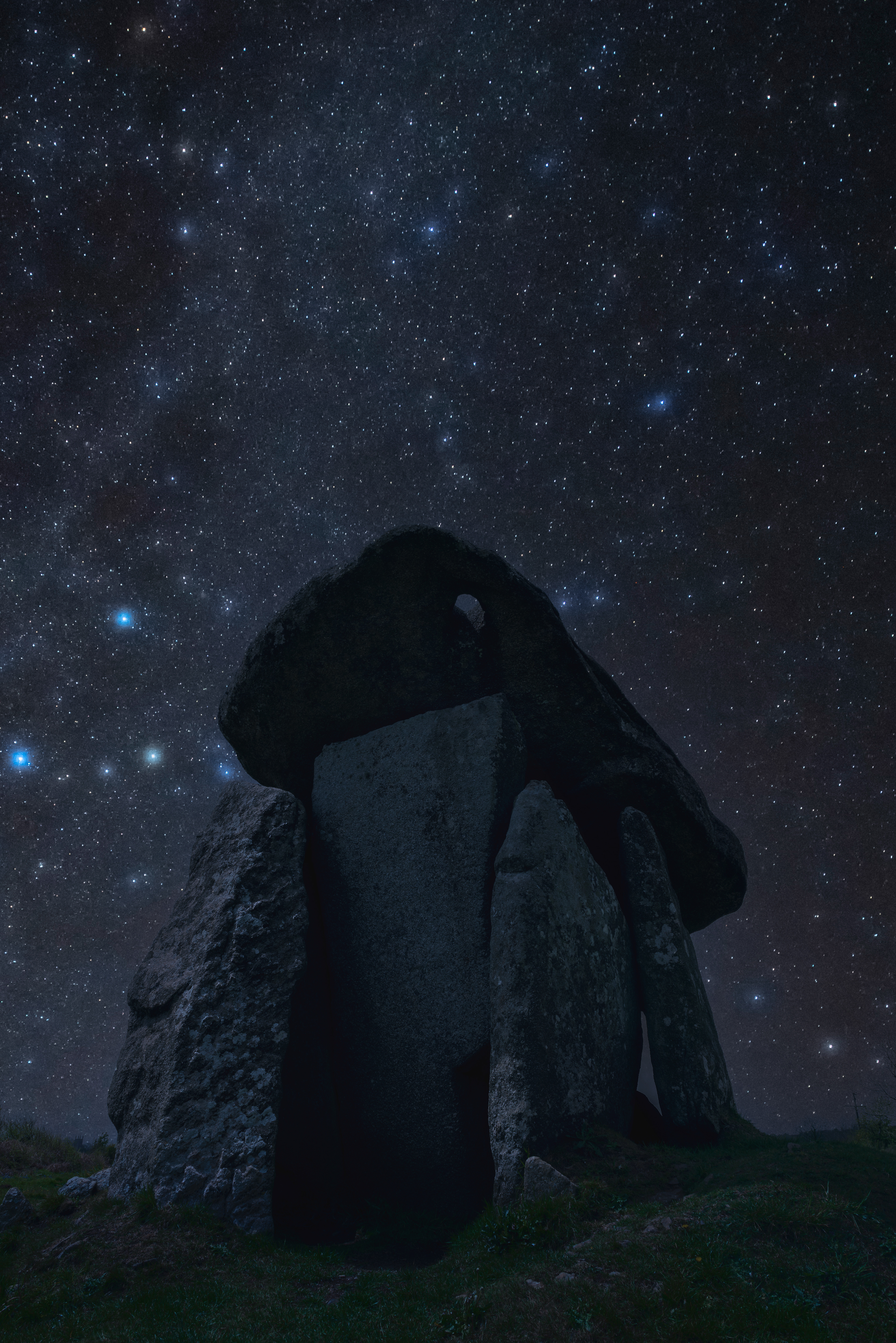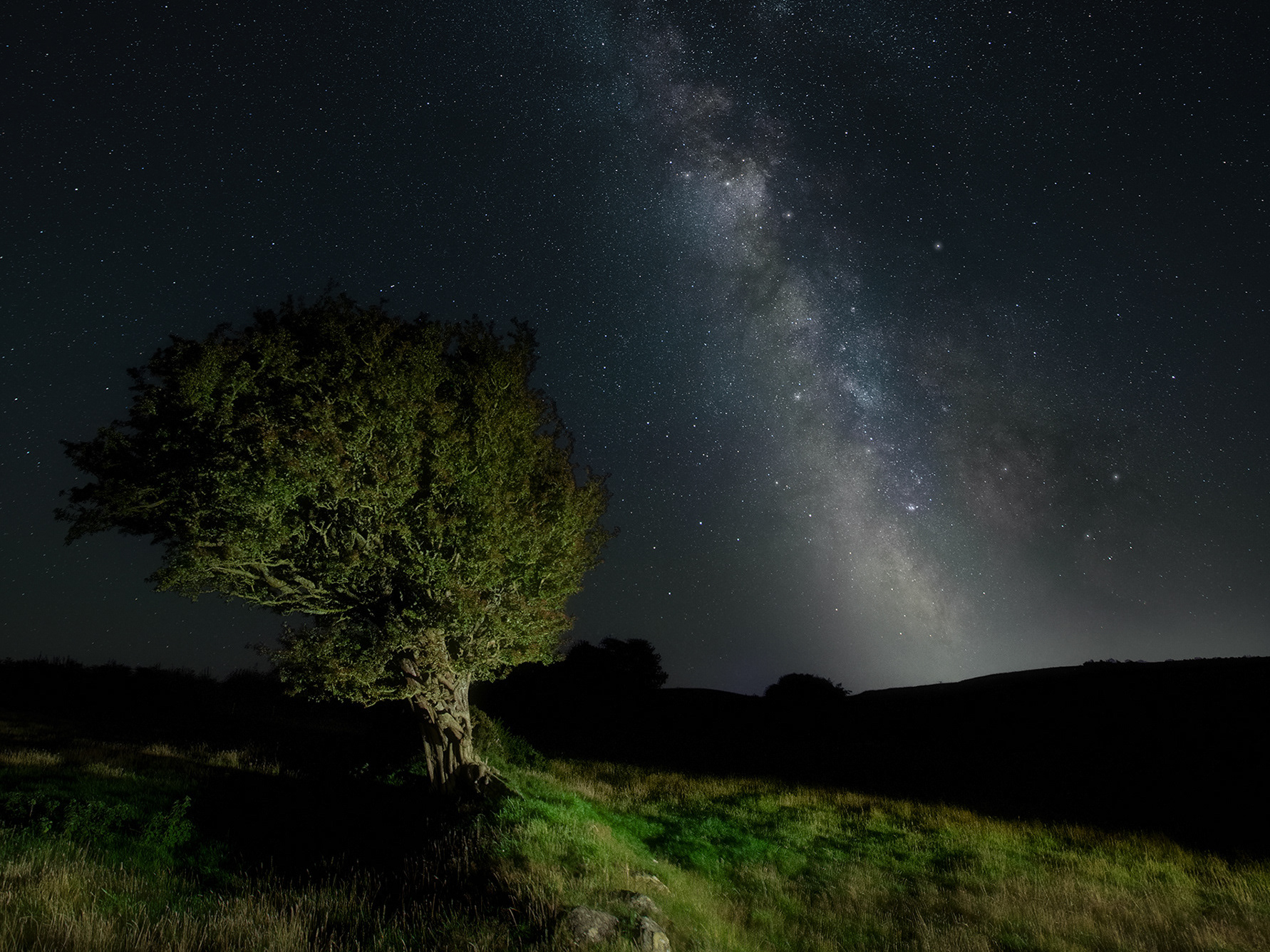The northern section of the Milky Way arch, Kielder Observatory, Northumberland
The image of the observatory building was taken around midday in very overcast conditions. I concentrated on taking a low contrast shot of the building with plenty of room above it. The image for the sky is a stacked image, and the position of the Milky Way behind the building is correct for the time of year. The night sky shot was taken just two days before the building shot.
Caban Coch Reservoir and Dam, Elan Valley, Powys, Wales
This is not one, perhaps, for the purists, but the Milky Way shot is taken at the same time of year as the shot of the reservoir and dam. However, the Milky Way was captured in Northamptonshire, whilst the landscape was captured in mid Wales. Positionally, the Milky Way would not be in this position until later in the year, not mid June which is when the landscape was captured. So, the purists would say that the gorse and blossom would not be in bloom at the time of year that the Milky Way would be in this position. Does this matter?
The Milky Way above my home
This is a composite to show what the Milky way could look like from my village, were it not for the light pollution from nearby towns!
Cassiopeia above the Pump House
This is a focal length blend / composite. I would say it is definitely a composite as the night sky shot is taken from a different location, but placed in a technically correct position on the sky for the time of year. The longer focal length used for the stars has made Cassiopeia look larger in the sky, as indeed it would have done had I used the same focal length for the shot in the first place.

Trethevy Quoit, Cornwall

Trethevy Quoit, Cornwall
St Mawes Castle, Cornwall, England
This shot was actually taken under the harsh glare of a spring midday sun. The sky was a clear blue, and not very inspiring. In fact the image was not at all interesting to the eye. I re-edited the image to give an overall "day to night" look, by darkening the exposure and cooling down the white balance significantly. I then used Photoshop's AI sky replacement tool to substitute the blue sky for a milky way shot I had taken at another time and location.
St Mawes Castle, Cornwall, England
As above, the same treatment was applied to replace the blue sky with a more interesting and atmospheric milky way night sky.
Tuscany Nightsky, Italy
Originally, this was a sunset shot of some distant hills and villages in Tuscany, Italy. Although the original shot was ok, I thought a different sky may help to do justice to the more interesting foreground. The village did not need any "day to night" treatment, as the scene had been captured in twilight anyway. Replacing the cloudy, sunset sky was simple and a milky way shot has served to bring more atmosphere to the image.
This is the type of composite I am more happy with, as the position of the Milky Way is consistent with the angle of the composition. I still feel it's cheating, but that's just me. Having studied other photographers astro photos, I now realise that composites are a lot more common than I once thought.



